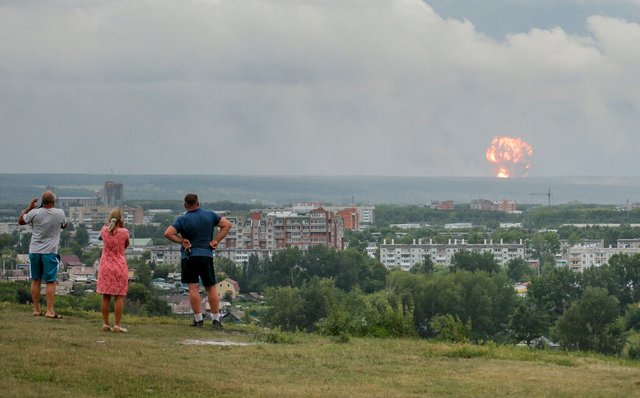
The Federal Service of Hydrometeorology and Environmental Surveillance of Russia (Rosgidromet) reported Tuesday that the radiation levels in Severodvinsk increased considerably and for a short time after the accidental explosion of the nuclear engine of a cruise missile occurred last week in the north of the country, said Russian state agency TASS. This is the first recognition of a fact that had already been reported by the municipal authorities.
In addition, the 450 residents of Nyonoksa, a town of 30 kilometers from Severodvinsk were advised that they would have been the most affected by the incident because of their proximity to the military base, to leave the place as of Wednesday, August 14, facing the Work to be carried out at the nuclear missile testing center where the explosion occurred, Russian private agency Interfax reported.
The recommendation came after rumors of a possible evacuation began to circulate on social networks and even reached the regional news agency Severny Novosti, which quoted anonymous sources.
However, the governor of the Arkhangelsk region, Igor Orlov, denied to Interfax that there was a planned evacuation and that the recommendation to leave the area is part of "planned measures."
Nyonoksa, dangerously close to a nuclear missile testing center built in 1954, is usually evacuated to different tests and scheduled works, numerous experts recalled, so it is difficult to know if in this case it is an environmental emergency resulting from the release of radioactive elements.
But the truth is that Rosgidromet recorded levels of gamma radiation (one of the most powerful and life-threatening) that oscillated between 4 and 16 times above normal values on August 8, when the explosion occurred, according to report cited this Tuesday by TASS. The levels had reached normal 90 minutes later.
On the same day of the accident Valentin Magomedov, head of civil defense of Severodvinsk, announced that his teams had recorded three times the permissible level of 0.6 microsieverts per hour. In total, the hike lasted 30 minutes, according to this department, and led the local population to deplete iodine stocks, used to counteract the effects of radiation, in pharmacies.
Leonid Bolshov, a member of the Institute of Nuclear Safety of the Russian Academy of Sciences, told TASS that these levels do not pose a risk to the population of the Arkhangelsk region. The position has been shared by the Russian government, which denies any danger to the local population.
Nor have there been signs of a possible spread of radioactive material in the environment outside Russia. Neither the Norwegian Nuclear Safety and Radiation Authority nor the British RIMNET monitoring network detected unusual levels within their respective monitoring zones, he told the British specialized portal New Scientist.
This does not mean that radioactive elements do not reach Europe, as happened in 2017 with a huge radioactive cloud allegedly caused by an accident at a plant in Russia, but they are expected to be at marginal levels.
The explosion, however, was strong enough to be detected by the network of sensors and monitoring centers of the Organization of the Comprehensive Nuclear Test Ban Treaty (CTBTO), based in Austria.
A worrying incident and a missile of "unlimited range"
At the outbreak on Thursday at the Nyonoksa military facilities, five nuclear scientists and two Russian soldiers were killed and several others injured, according to the latest official reports. It is believed that it was caused by an accident while the group was working on a new nuclear propulsion system for the avant-garde 9M730 Burevestnik cruise missile (known as SSC-X-9 "Skyfall" in the west).
After strong speculation, it has become clear that the incident did not involve a nuclear warhead such as the projectile can carry, and whose power is potentially devastating, but to a new and small nuclear reactor designed by the Russian agency Rosatom to propel the weapon.
It is a cutting-edge technology that no country currently has, although the United States does try or has tried to develop it. A nuclear propulsion system would allow the missile to have a practical reach.